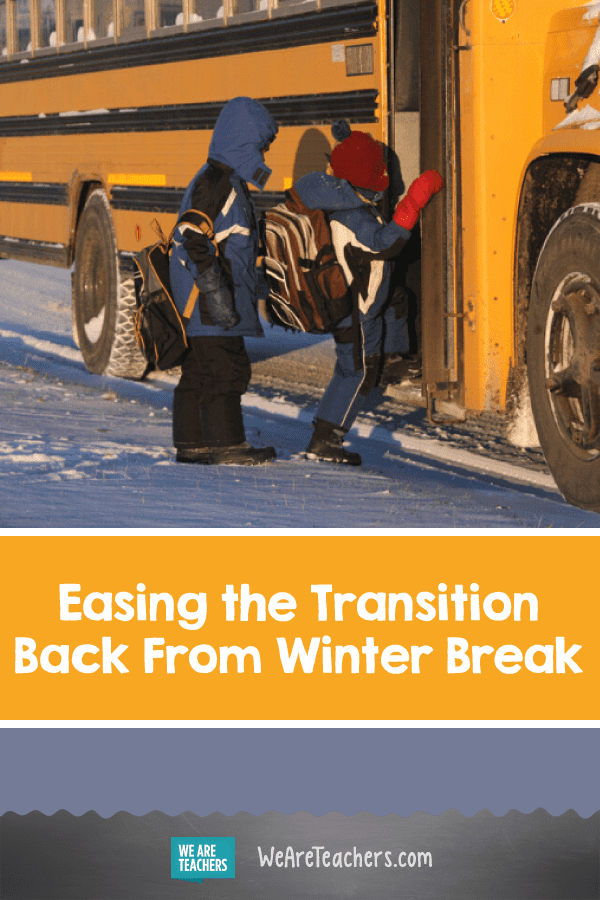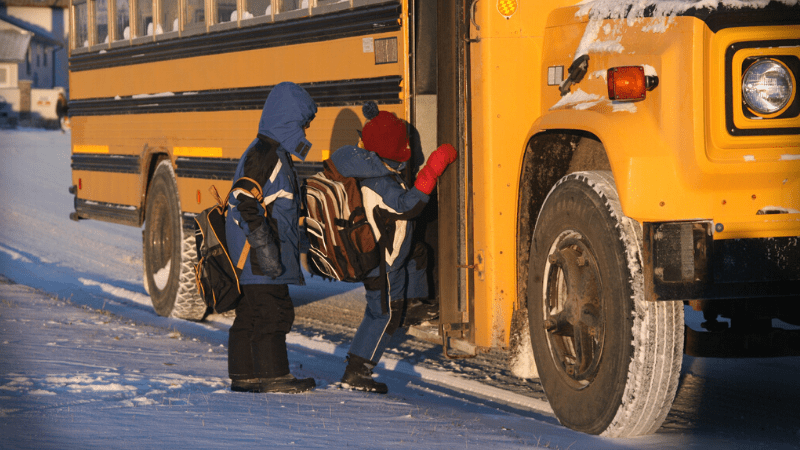The holidays are over, the tree is looking a bit…dead, and the back to school date is creeping up as fast as those midwinter blues. Kids spend so much time looking forward to the holidays that the transition back to second semester can be a somewhat depressing letdown for some of them. We can help ease the transition back to school for students who have trouble readjusting after two long weeks off by trying some of these ideas.
Send a welcome back message to kids a few days before break ends
However you communicate with your class, now is a great time to do it. Send a group chat message, a postcard, an email, a letter, or a post on your class page to let students know you are excited to see them again. If you are personally comfortable, you could share some of the things you did over break and give a sneak peak of an exciting thing happening during their first week back.
Give them a new “something” to look forward to
If kids think they are returning to a monotonous, seven hour school day with no end in sight (spring break, after all, is still a few months off), motivation can lag. Now is a great time to start a new class/team/school wide competition or initiative, create a fun project that culminates in a show or fair, or design another plan to encourage involvement. Any idea that goes against the typical daily grind will work well for this. Involve student choice whenever possible via a project menu or student project proposal to make sure they are invested in their new idea.
Assist in intentional goal setting
Students from elementary through high school are aware of the idea of the New Year’s Resolution, but do they know that 80 percent of resolutions will be broken? Engage your students in meaningful goal setting, complete with smaller checkpoints along the way. What do they want to improve on in the new year? How can you make that happen together? These could be a combination of personal goals and academic goals, or you may find that some blend together. For example, a student may say they want to get organized, which may have some components in both their personal and academic realms. Involve families in this goal setting however possible, from encouraging conversations with parents to communicating about the assignments so parents can start the conversation.
Don’t ignore break happened
Allow some processing and socialization time for students when they return. They’ve just engaged in two weeks of new adventures and it may help them to ease back into it by sharing with their friends. The first day of school ice breakers you used in August work great now, too.
Avoid heavy homework loads during the adjustment
Second semester may bring a new level of stress to “get through” the curriculum by the end of the year, or by standardized testing in April. However, letting that stress and heavy workload transfer onto students who are adjusting back from break can backfire. Try to ease students into the curriculum by regrouping and explaining where we’ve been, where we are going, and how the new unit relates to this. It can help to show all of their accomplishments and learning from the first semester before diving right in to new assignments and workloads. Consider lighter and more enjoyable homework the first week back, such as finishing up that just-for-fun book they were reading over break and sharing with the class, or some reflective writing about break (depending on your subject and age group).
Determine anxiety vs anxiety
As always, try to be alert to students who just need a few days to get back in the groove and those who are having a true issue with depression, the winter blues, or other mental health issues. Remind students of the connection between getting back into the rhythm of a normal bedtime and sleep schedule, and how it impacts your mental health and ability to focus. Stay in touch with parents and counselors to help more vulnerable and sensitive populations adjust and to look for warning signs if they aren’t. We like this helpful article from Harvard University on back to school anxiety for more information on signs of a deeper issue.
We’d love to hear how you ease the transition back to school. Come and share in our WeAreTeachers HELPLINE group on Facebook.
Plus, why winter break is hard for so many of our students.


